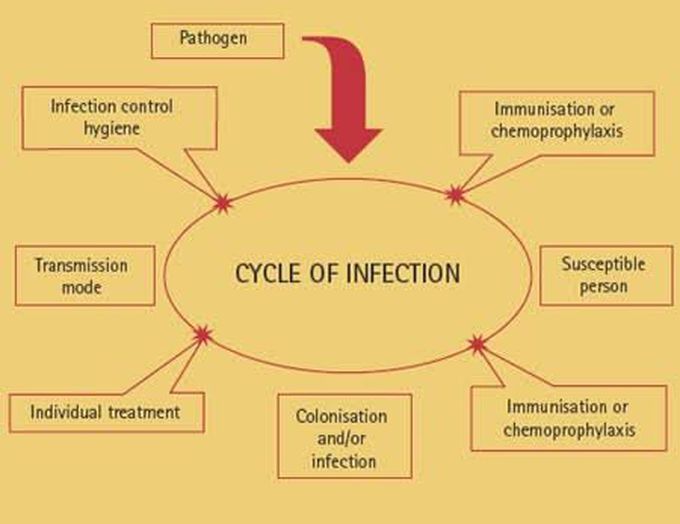


Cross infection in dental professionals
Cross-infection during clinical practice can occur with transmission of infectious agents between patients and health workers in a clinical environment. Transmission of dental infection can occur through infected air droplets, blood, saliva, and instruments contaminated with secretions. Persons who seek dental care could be in the prodromal phase or being carriers of certain infectious diseases, without knowing about their physical conditions. In addition, some infectious diseases have prolonged incubation periods or post-infection “window period” during which antibodies can’t be detected Cross-infection in dentistry can occur through many pathogenic organisms found in oral cavity and respiratory tract. Example of these organisms are cytomegalovirus (CMV), Hepatitis C Virus (HCV), Hepatitis B Virus (HBV), herpes simplex virus (HSV types 1 and 2), HIV/AIDS, Mycobacterium tuberculosis, staphylococci, streptococci and other viruses and bacteria [4]. Furthermore, nowadays we are living in an era of eco-epidemiology, with global emergence and re-emergence of many communicable diseases . Emerging agents as Ebola, Middle East Respiratory Syndrome-Corona Virus (MERS-CoV), H1N1 and H5N1 and others can be also transmitted during dental practice. Blood borne infections as HIV/AIDS, HCV, HBV, and other emerging blood borne organisms represent the main risks for the transmission of infections in dental practice. Exposure to blood and body fluids need great concerns from both dental care providers and the patients
I was diagnosed as a Hepatitis B carrier in 2015, with early signs of liver fibrosis. At first, antiviral medications helped control the virus but over time, resistance developed, and the effectiveness faded. I began to lose hope. In 2021, I discovered NaturePath Herbal Clinic despite my skepticism, I decided to give their herbal treatment a try.To my surprise, after just six months, my blood tests came back negative for the virus.It was nothing short of life-changing.I never expected such incredible results from a natural treatment. But it not only cleared the virus it restored my hope, my health, and my peace of mind.If you or someone you know is battling Hepatitis B, I truly encourage you to explore the natural healing path offered by NaturePath Herbal Clinic. It gave me a second chance and it might do the same for you.www.naturepathherbalclinic.com info@naturepathherbalclinic.com


